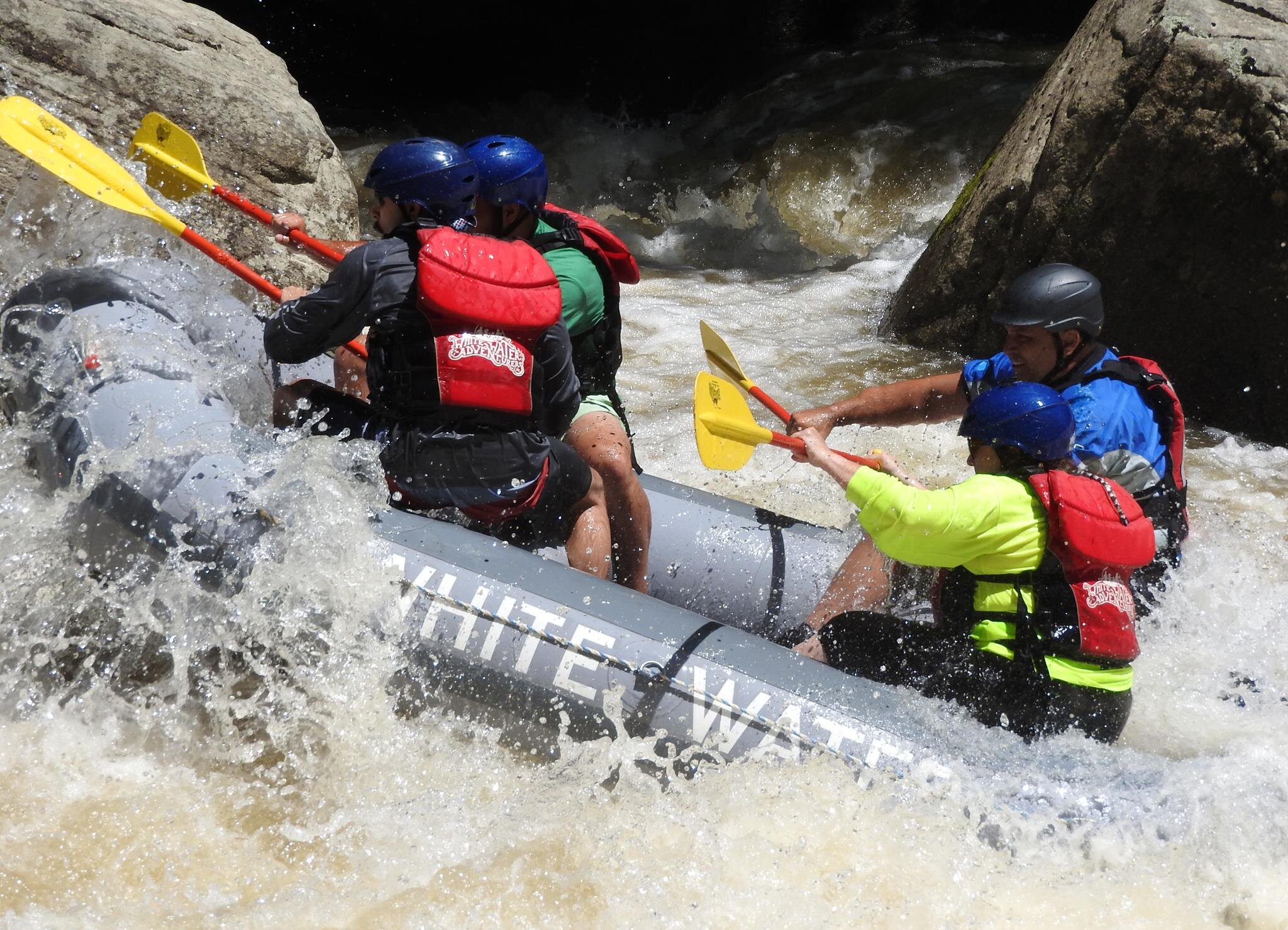
Whitewater Rafting in Ohiopyle

The River is Calling!
Ohiopyle is one of the best places on the east coast for whitewater rafting and kayaking, and with tens of thousands of visitors each year traveling from around the world, it is also the most popular whitewater destination on the east coast.
The Youghiogheny’s diverse river and rapids truly offers an experience for everyone. From calm family float trips to extreme class IV and V rapids that will challenge even the most experienced rafter, fun awaits around every bend in Ohiopyle.
Additionally, the Lower portion of the Youghiogheny River boasts a natural phenomenon that you can find very few other places in the world. The unique “loop” Ohiopyle is known for is a horseshoe bend in the river that allows rafters and kayakers to put in and take out near the same area, eliminating the hassle of transportation and making learning and short trips quick and easy.
If you are ready to embark on a unique and challenging experience on the Youghiogheny River. Check out the different trip options below.
Lower Yough - Most Popular
Whether its your first experience with rafting or you are a seasoned veteran looking for a new challenge, you will find it on the Lower Yough. Class III and IV rapids will test you while providing a fun adrenaline rush that the entire group can enjoy. Come and experience the whitewater that started it all on the east coast. Makes for a great team building or family bonding exercise!
Middle Yough - Family Friendly
Looking for a calm and relaxing float trip the whole family will enjoy? The Middle Yough offers Class I and II rapids that are perfect for enjoying the natural beauty of the Ohiopyle valley while being on the water.
Upper Yough - Extreme Adventure
The most extreme whitewater experience Ohiopyle has to offer! Recommended for experienced rafters and those looking for a thrill they will never forget! The Upper Yough’s Class IV and V rapids will push you to the edge of your abilities and test your physical endurance in this wild ride down the most exhilarating part of the Youghiogheny river.
Ohiopyle's History of Rafting
We have mother nature to thank for the gem that is Ohiopyle, due largely in part to the strong and graceful Youghiogheny river, or "Yough" (pronounced "Yok") for short. Youghiogheny is a word from the Lenape language that means "a river which flows in a contrary direction," due it flowing north toward Pittsburgh as a tributary of the Monongahela river.
From Native Americans to "Falls City"
The earliest signs of humanity along the Youghiogheny date back almost 10,000 years. More recently and documented historical inhabitants were the Monongahela Native American peoples, dating back to roughly 1000 years ago. The year-round flow and cool temperatures of the river means these natives probably used the river for many purposes including fishing, travel and as a great way to cool down in the sumemer heat, much as we do today. Mysteriously these people vanished from the area shortly before the arrival of European settlers in the 1600's. Following this several other native tribes used the Ohiopyle area as a hunting grounds but never made a permanent home. The Shawnee, Seneca and Delaware tribes all passed through the area, and the name "Ohiopyle" comes from a Lenape Delaware word meaning "white frothy water".
In 1754, while scouting western Pennsylvania for a water route to aid in retaking the fort at the forks of the Ohio river (presently the city of Pittsburgh), a young George Washington floated the Yough River from modern day Confluence toward Ohiopyle. As he neared the falls, the river gained speed forcing his men onto the land. His journal recorded the incident, stating "The river became so rapid as to oblige us to come ashore". He was referencing what we now know as the 19-foot tall Ohiopyle Falls.
Beginning in the early 1800's, the region started to grow around the forestry industry. In 1803, Lewis and Clark commissioned a keelboat that was built on the banks of the Yough near McKeesport for their famed journey across the US. By 1811, the population in Ohiopyle began to swell as the National Road was completed in 1817 opening the region to trade with eastern markets. Lumber was the dominant industry and a mill was constructed on the rock outcropping adjacent to the falls not far from the present day visitor's center and parking lot. The river was used as trees were felled and floated down stream to the mill, where the water powered a large wheel to run the mill. In 1871 the first rail line through the Yough Valley was completed, and passenger stations were built in Ohiopyle. These railroads began bringing Tourists from Pittsburgh and surrounding areas, and by the early 1900's Ohiopyle was home to several grand hotels, with the area eventually becoming known as "Falls City".
Whitewater As We Know It Today
In 1959 a small group of young men were the first to complete a descent of the Upper Yough (Class IV/V) River in Maryland. Bill Bickman, Dave Kurtz, and Tom Smyth unknowingly started a revolution in what would become the hot spot of whitewater rafting. Using wooden boats and basically no protective equipment such as helmets or flotation devices, these intrepid adventurers built the foundation for what would become a thriving community of outfitters, guides, and annual travelers.






